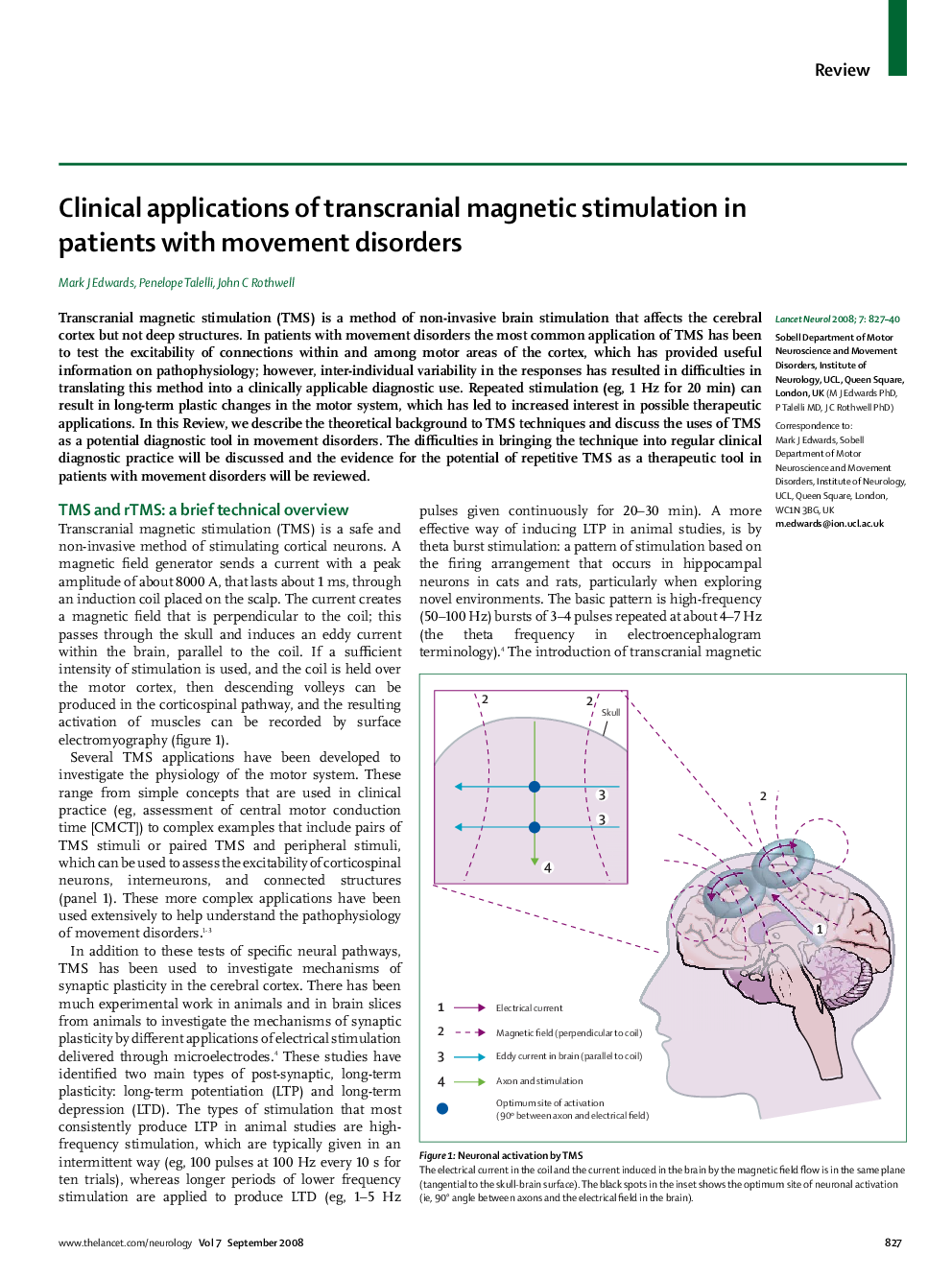| Article ID | Journal | Published Year | Pages | File Type |
|---|---|---|---|---|
| 3067221 | The Lancet Neurology | 2008 | 14 Pages |
SummaryTranscranial magnetic stimulation (TMS) is a method of non-invasive brain stimulation that affects the cerebral cortex but not deep structures. In patients with movement disorders the most common application of TMS has been to test the excitability of connections within and among motor areas of the cortex, which has provided useful information on pathophysiology; however, inter-individual variability in the responses has resulted in difficulties in translating this method into a clinically applicable diagnostic use. Repeated stimulation (eg, 1 Hz for 20 min) can result in long-term plastic changes in the motor system, which has led to increased interest in possible therapeutic applications. In this Review, we describe the theoretical background to TMS techniques and discuss the uses of TMS as a potential diagnostic tool in movement disorders. The difficulties in bringing the technique into regular clinical diagnostic practice will be discussed and the evidence for the potential of repetitive TMS as a therapeutic tool in patients with movement disorders will be reviewed.
